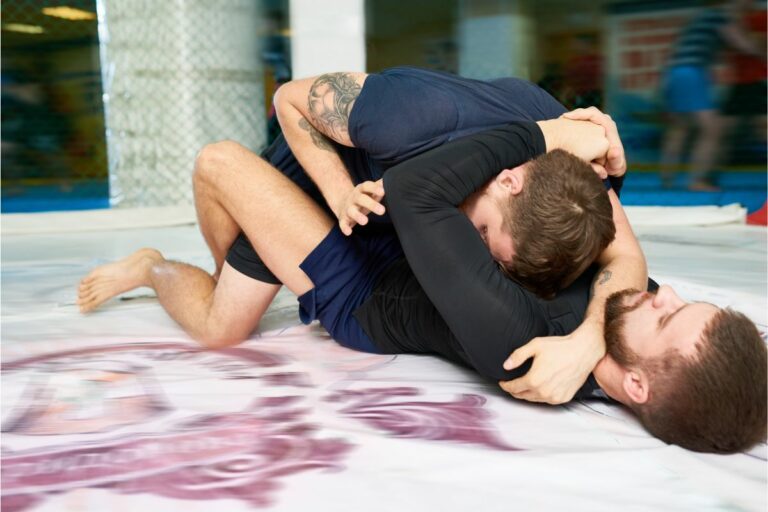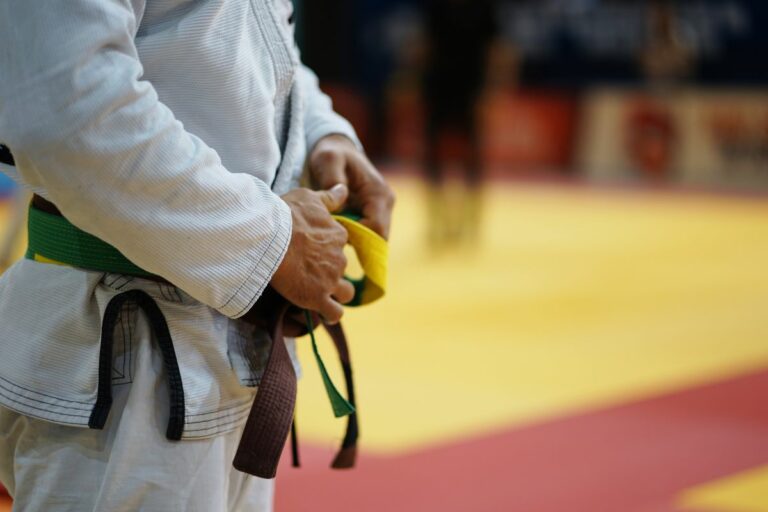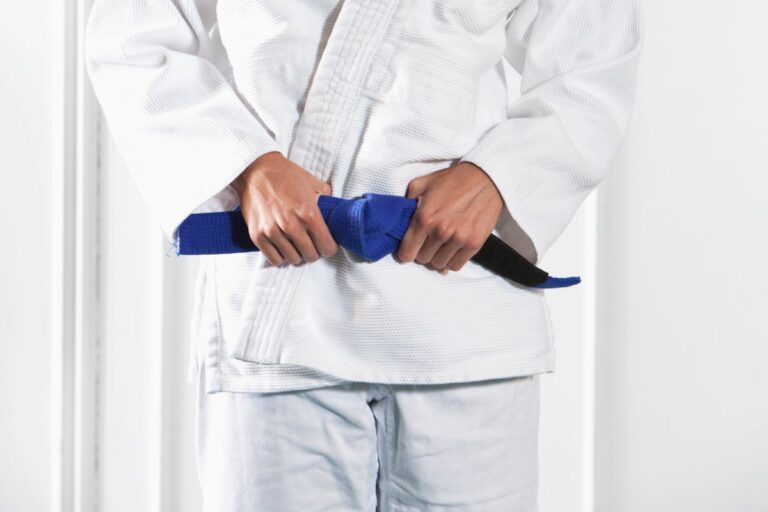Complete Guide To IBJJF Weight Classes (Gi And No-Gi!)
For many fans of Brazilian Jiu-Jitsu, the chance to compete against other fighters is often one of the main goals of training; this is a chance to really hone and practice your skills, show off your strengths, and pit yourself against other experts and professionals in your field.
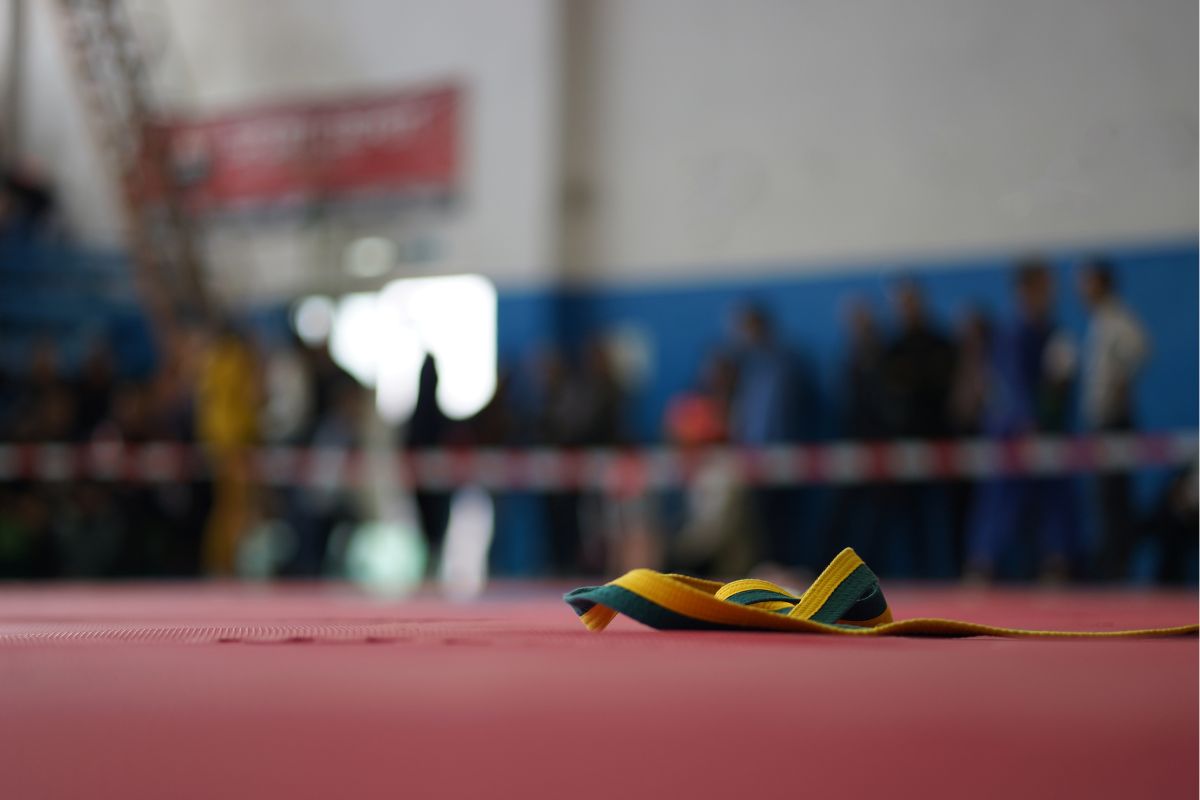
In order to properly understand the art of competing within the sport, we need to establish a basic understanding of the IBJJF, including its purpose, structure, and the various weight classes that exist.
Fortunately for you, we have put together the ultimate guide, so read on to discover everything that you need to know!
What Is Brazilian Jiu-Jitsu?
Brazilian jiu-jitsu is an art that combines grappling and ground fighting. It was developed in Brazil, where it has become one of the most popular martial arts today.
Brazilian jiu-jitsu differs from other styles of mixed martial arts largely due to the increased focus on grapples, throws, rolls, and general groundwork, rather than a focus on striking.
In addition, there is a lot of emphasis placed on joint locks and chokes, rather than punches or kicks.
BJJ practitioners use their legs, hips, back, and arms to control opponents instead of relying solely on strikes, and the goal of this style is to submit your opponent by applying pressure until they give up or tap out.
The first recorded match between two people using the techniques of Brazilian jiu-jitsu took place in Rio de Janeiro in December 1882.
A young man named Hélio Gracie defeated another student, who had been training with him since childhood.
Since then, Brazilian jiu-jitsu has grown into a sport and a worldwide phenomenon – today, thousands of schools teach the art around the world, including over 200 in the United States alone.
The history of Brazilian jiu-jitsu as we now recognize it can be traced back to the early 1900s when the Gracie family began teaching martial arts in Rio de Janeiro.
They were influenced by Japanese budo and judo but also incorporated aspects of capoeira and savate.
Their original school was called Escola do Vale Tudo (School of Violence), and it was founded by Carlos Gracie, Sr., a former wrestler, and police officer.
His son, Carlson Gracie, would later go on to found the famous Gracie Academy and play a major role in the development and evolution of the sport.
Carlson Gracie taught his sons, Rickson and Royce, how to defend themselves against attackers, and both then went on to create their own version of the art.
In the late 1950s, Rickson became the first person to win a tournament sanctioned by the International Brazilian Jiu-Jitsu Federation (IBJJF).
He won the World Championship at the age of 17 and in 1965, Royce Gracie became the second person to win a championship title.
The following year he won the Pan American Championships. Both brothers are considered among the greatest fighters ever to have competed in the sport, and retain a strong influence to this day.
What Are The Basic Principles Of BJJ?
BJJ is a highly technical combat system that focuses on throwing, takedowns, chokes, and joint locks. These techniques are used to take down and defeat an attacker.
When you learn BJJ, you will start off learning basic positions and movements.
You’ll begin by practicing these moves on pads, then move on to sparring. Eventually, you’ll transition to live rolling – which means going for real fights!
Some of the main principles and moves in BJJ include:
Grappling
Grappling is a major element of BJJ and involves taking down and defeating your opponent. There are many different types of grappling, such as wrestling, standup, and ground fighting.
Throws
A throw in BJJ is any technique where you grab your opponent’s limbs and twist them away from you.
This causes pain and discomfort and makes it difficult for your opponent to fight effectively. Throws come in three varieties: leg, arm, and shoulder throw.
Choke
A choke in BJJ is any type of hold that restricts breathing or blood flow to your opponent’s brain. Chokes can either be applied from above or below your opponent.
Joint Locks
Joint locks are one of the most important components of BJJ. Joint locks involve locking your fingers or hands together behind your opponent’s back, preventing them from moving freely.
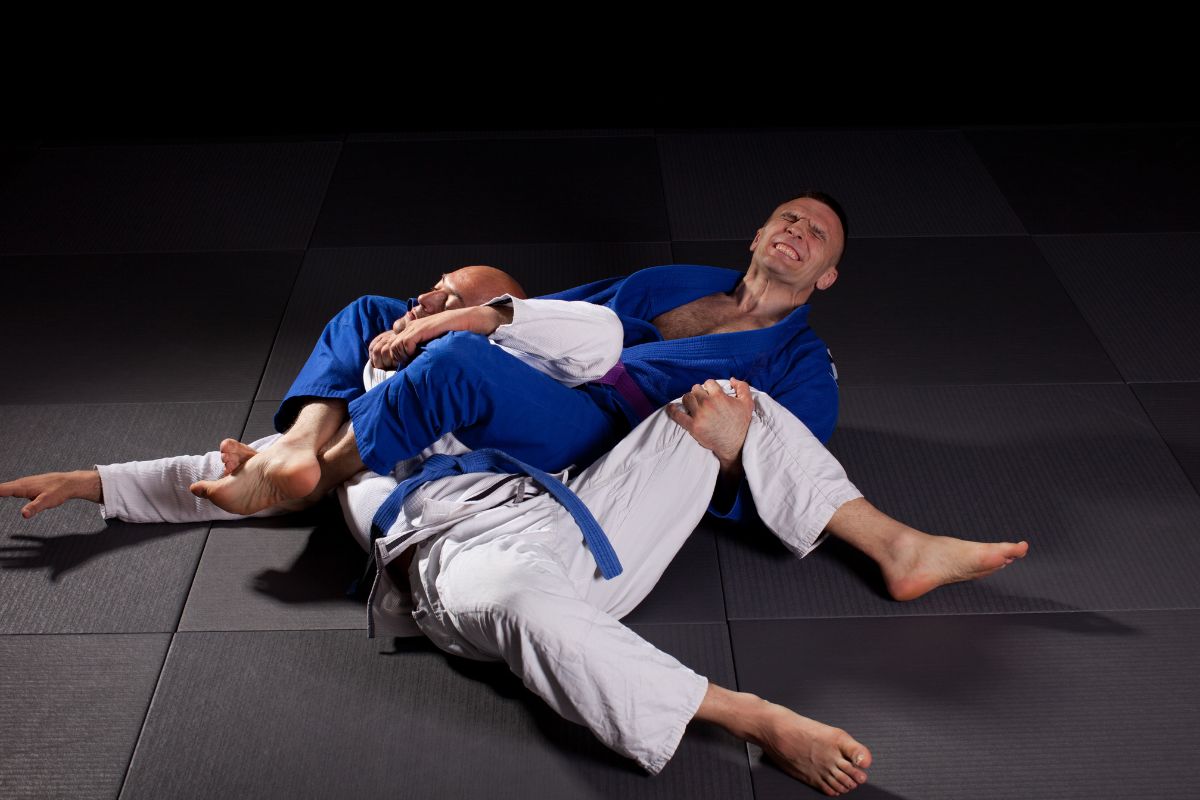
Guard Passing
This is a type of pass that occurs when you use your legs to block your opponent’s attacks while passing with your arms.
Pin
This is when you lock your opponent’s limb into position so they cannot escape.
Pinning someone is very similar to wrestling, except instead of using your weight to pin your opponent, you use leverage.
Sweep
A sweep in BJJ is when you use your hand to push your opponent over your head, allowing you to control their body. It’s often used to set up other submissions.
Takedown
A takedown in BJJ is when your opponent falls to the ground due to you applying pressure on their limbs. Takedowns can also occur when you apply force to your opponent’s body.
Submission
A submission in BJJ is when one fighter takes advantage of another’s weakness to gain a dominant position. Submissions can be achieved through various methods, including joint locks, sweeps, chokes, etc.
What Is The IBJJF?
The International Brazilian Jiu-Jitsu Federation (IBJJF) was founded on March 14th, 1993. Its mission is to promote the sport of Brazilian jiu-jitsu throughout the world.
The IBJJF is responsible for organizing events such as the World Championships, Pan American Championships, European Championships, and Copa Podio. They also host an annual training camp called Gracie University.
History Of The IBJJF
As we mentioned, the IBJJF was created in 1993 by Rigan Machado, a black belt under Carlson Gracie.
Today, the organization oversees competitions throughout the world and holds an annual World Championship every October. There are currently more than 1,000 competitors registered for each weight class.
The IBJJF’s rule set is designed to promote competition while maintaining safety.
Competitors must wear approved uniforms, and may not compete if they are injured or ill. All matches take place inside a ring, and no weapons are allowed.
The IBJJF World Championship is held annually in Brazil.
It features five weight classes: Men’s Absolute, Men’s Lightweight, Men’s Middleweight, and Men’s Women’s Absolute. Each division includes three belts: brown, purple, and gold.
The IBJJFComprises four divisions: absolute, open, gi and no-gi. An absolute division allows competitors to wear any type of clothing, whereas no-gi requires competitors to use only specific types of gear.
Gi means that the competitor wears a traditional gi uniform, which consists of a white top and pants, along with a headband and sleeve wraps.
How Does The IBJJF Work?
The IBJJF holds competitions at different levels. These include:
- Adult Nationals – For adults who have competed in BJJ at least once before.
- Novice Nationals – For beginners who have never competed before.
- Cadet Nationals – For children ages 8 to 13.
- Junior Nationals – For children ages 5 to 7.
- Teen Nationals – For teenagers ages 14 to 18.
- Masters Nationals – For adults over 19 years old.
- Black Belt Worlds – For black belt level competitors.
- Brown Belt Worlds – For brown belt level competitors.
How Do I Qualify To Compete In An IBJJF Event?
To qualify to compete in an IBJJF event, you must first earn a ranking in one of the following categories:
- Black Belt – For those who hold a black belt.
- Brown Belt – For those who have earned a white belt and purple belt.
- White Belt – For those who haven’t earned any belts yet.
- Purple Belt – For those who don’t have any belts but want to start competing.
This helps to ensure that all competitors are safe, and that fighters are working and competing against others who are of a similar weight, experience level and background.
What Are IBJJF Weight Classes?
Weight classes represent a measure of how much people weigh. There are five weight classes in each gender. The weights range roughly from 50kg to 100kg.
- 50kg – Lightweight class
- 55kg – Middleweight class
- 60kg – Heavyweight class
- 70kg – Super heavyweight class
- 100kg – Absolute class
Each weight class has a minimum and maximum weight limit.
This means that if you weigh less than the minimum or more than the maximum, then you cannot compete in that particular weight class; we will take a closer look at the specifics of each weight class momentarily.
Can I Train With A Gi Or No-Gi?
In addition to different weight classes, there are also two types of grappling tournaments recognized by the IBJJF: Gi and No-Gi, and these have their own weight classes As the name suggests, gi tournaments require competitors to wear a gi, while no-gi tournaments allow competitors to wear whatever they like.
There are pros and cons to each, and the choice may be taken out of your hands when it comes to certain competitions and tournaments, which may have rules in order for you to be eligible to compete; it is important to always check the rules and requirements for specific competitions prior to entering, to avoid any nasty surprises or shocks down the line.
Gi Vs No-Gi
The main difference between gi and no-gis is that gi offers greater protection for fighters while you are in the ring.
This simple addition provides an extra layer of padding that protects you from getting too badly hurt, as there is protection between your skin and other surfaces.
A gi also gives you a better grip on slippery surfaces, which allows you to execute moves more effectively.
On the other hand, no-gi does not offer any protection. Therefore, you might find yourself slipping and falling during practice sessions.
Additionally, no-gis don’t give you as good a grip on slippery surfaces. So, when performing certain techniques, you may struggle to maintain control over your opponent.
If you prefer the freedom of being able to perform without wearing a gi, then no-gis are for you. However, they lack the protection offered by gi and may cause you to get injured more easily.
Gi And No-Gi Weight Classes – Men
The IBJJF recognizes different weight classes for gi and no-gi tournaments. These weight classes are based upon the competitor’s body mass index (BMI).
Gi Weight Classes
Gi weight classes are based on BMI. They are divided into three main categories: Lightweight, middleweight, and heavyweights, with sub-categories within each of these.
- Rooster Class – Under 57.5 kg
- Light Feather Class – Above 57.5 kg and under 64 kg
- Feather Class – Above 64 kg and under 70 kg
- Lightweight Class – Above 70 kg and under 76 kg
- Middleweight Class – Above 76 kg and under 82.3 kg
- Medium Heavy Class – Above 82.3 kg and under 88.3 kg
- Heavyweight Class – Above 88.3 kg and under 94.3 kg
- Super Heavyweight Class – Above 94.3 kg and under 100.5 kg
- Ultra Heavyweight Class – Above 100.5 kg, and no upper limit
No-Gi Weight Classes
No-Gi weight classes are also based on BMI, and are as follows:
- Rooster Class – Under 55.6 kg
- Light Feather Class – Above 55.6.5 kg and under 61.7 kg
- Feather Class – Above 61.7 kg and under 67.5 kg
- Lightweight Class – Above 67.5 kg and under 73.5 kg
- Middleweight Class – Above 73.5 kg and under 79.6 kg
- Medium Heavy Class – Above 79.6 kg and under 85.5 kg
- Heavyweight Class – Above 85.5 kg and under 91.6 kg
Gi And No-Gi Weight Classes – Women
There are eight weight classes for women, and these are as follows:
Female Gi Weight Classes
- Rooster Class – Under 48.5kg
- Light Feather Class – Above 48.5kg and under 53.5 kg
- Feather Class – Above 53.5 and under 58.5 kg
- Lightweight Class – Above 58.5 kg and under 64 kg
- Middleweight Class – Above 64kg and under 69 kg
- Medium Heavy Class – Above 69 and under 74 kg
- Heavyweight Class – Above 74 kg and under 79.3 kg
- Super Heavyweight Class – Above 79.3 kg
- Open class – open to all weight classes
Female No-Gi Weight Classes
- Rooster Class – Under 46.7kg
- Light Feather Class – Above 46.7kg and under 51.7 kg
- Feather Class – Above 51.7 kg and under 56.7 kg
- Lightweight Class – Above 56.7 kg and under 61.6 kg
- Middleweight Class– Above 61.6kg and under 66.7 kg
- Medium Heavyweight Class – Above 66.7 and under 71.6 kg
- Heavyweight Class – Above 71.6 kg and under 76.6 kg
- Super Heavyweight Class – Above 76.6kg
- Open class – open to all weight classes
Final Thoughts
The best way to get started in BJJ is to find a school near you that teaches the style you want to learn – this is the perfect way to build and hone your skills, improve your confidence, and allow you to move up through the various grades.
Once you have a little experience under your belt – no matter which color! – you will be ready to start trying out competitions and tournaments – and this is where the fun really begins!


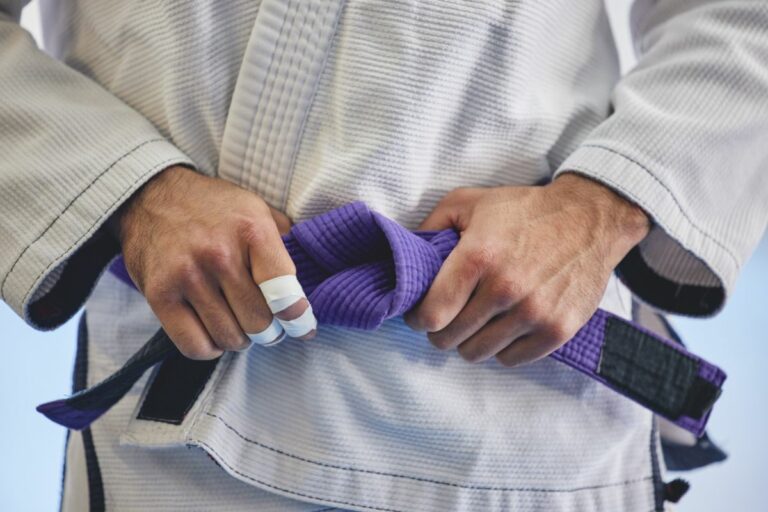
![[EXPLAINED] What Is Jiu-Jitsu? | The Best Martial Art](https://mmaboxx.com/wp-content/uploads/2022/06/EXPLAINED-What-Is-Jiu-Jitsu-768x512.jpg)

